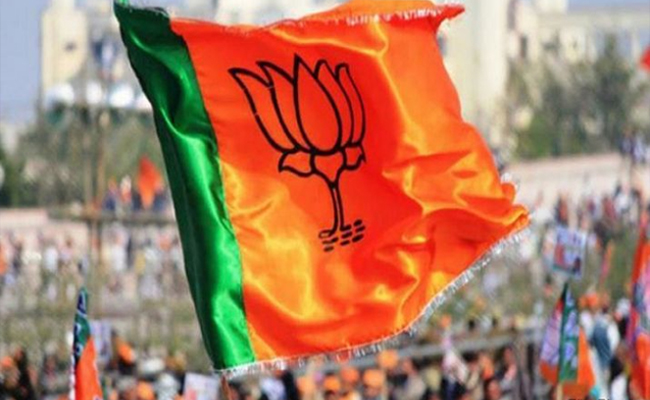Belagavi: The five-member fact-finding team of BJP on Saturday reached here to collect firsthand information into the matter where a tribal woman was assaulted and paraded naked.
A delegation of MPs comprising Aparajita Sarangi, Sunita Duggal, Ranjeeta Koli, Locket Chatterjee and BJP national secretary Asha Lakra arrived at the Belagavi airport in the morning.
The team will not only meet the victim and console her, but will also get detailed information about the incident.
The woman was also tied to a pole after her son eloped with a girl from the same community at Vantamuri village in Belagavi on December 11.
Police have arrested eight people while eight others are still at large.
The Karnataka High Court has taken up the case on its own. It also termed the incident worse than what had happened to Draupadi during Mahabharata, as Lord Krishna came to her rescue, but in the Belagavi incident, no one came to help the victim.
The BJP will also be staging statewide demonstrations in all the districts condemning the incident.
BJP president J P Nadda and Union Finance Minister Nirmala Sitharaman have also condemned the assault. In a statement, Nadda said such henious crimes especially against women, are happening at regular intervals ever since the Congress government has come to power in Karnataka. This also exposes the irresponsible behaviour of Congress governments everywhere in the country in tackling such crimes.
ALSO READ: JP Nadda issues statement condemning Belagavi incident, netizens ask "What about Manipur?"
In a post of 'X', Sitharaman said: ''In @INCIndia there is no 'nyay' (Justice) for the SCs and STs. The recent incident in Belagavi, Karnataka falls in the same category as those repeated atrocities against the Dalits seen till recently in Congress-ruled Rajasthan and Chhattisgarh. For Congress the downtrodden are just a votebank.'' Karnataka Chief Minister Siddaramaiah slammed Nadda for attempting to gain political mileage out of the Belagavi incident.
ALSO READ: FM Sitharaman slams Cong over Belagavi woman assault incident
In a strongly worded statement, the chief minister said the BJP's rule in Karnataka witnessed multiple instances of violence against women, but Nadda had forgotten this to politically target the Congress government. Unfortunately, he is using a recent incident of violence against a woman in Belagavi for politics, he charged.
Let the Truth be known. If you read VB and like VB, please be a VB Supporter and Help us deliver the Truth to one and all.
Kozhikode (PTI): Violence erupted overnight at various places across Kerala, particularly in northern districts, following the announcement of local body election results, police said.
In Eramala in Kozhikode district, tension prevailed throughout the night after the Indira Gandhi Bhavan, a Congress office, was allegedly attacked by CPI(M) workers.
According to an FIR registered at Edachery police station, around 200 people marched towards the Congress office carrying dangerous weapons and vandalised the building, causing damage estimated at around Rs five lakh.
A statue of late prime minister Indira Gandhi was also damaged in the attack, police said. Soon after, UDF activists gathered at the spot, further aggravating the situation.
ALSO READ: Attempt to shield 'infiltrators': BJP ahead of Cong's rally against 'vote theft'
However, with the deployment of additional police personnel, the situation was brought under control, an officer said.
Police said another violent incident was reported at Marad, where stones were allegedly pelted at a UDF victory procession, leaving several persons injured.
In Sultan Bathery in Wayanad district, police registered a case after a car carrying a UDF activist and his family members was allegedly attacked by around 40 CPI(M) workers, an official said.
Sultan Bathery police also booked UDF activists in a separate incident for allegedly attacking a CPI(M) worker who objected to the bursting of crackers near his house, the officer said.
In Panoor in Kannur district, houses of several Muslim League activists were allegedly attacked by CPI(M) workers. Vehicles parked at the houses were also damaged.
According to Panoor police, the violence broke out after a UDF victory rally was allegedly stopped by CPI(M) workers armed with swords and daggers. Some UDF leaders sustained injuries in the clash.
Clashes were also reported between UDF and LDF workers at Ulikkal in Kannur district, though police intervention brought the situation under control later in the night, an officer in the Ulikkal police station said.
In Bedakom in Kasaragod district, an LDF victory march turned violent after CPI(M) activists allegedly intercepted UDF workers passing through the area. Some policemen who intervened suffered minor injuries, an officer said.
Similar violence was reported from Neyyattinkara in Thiruvananthapuram district following clashes between CPI(M) and BJP workers. Police said workers from both sides sustained minor injuries and were admitted to hospitals. Cases will be registered after formal complaints are received, police said.





